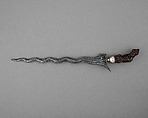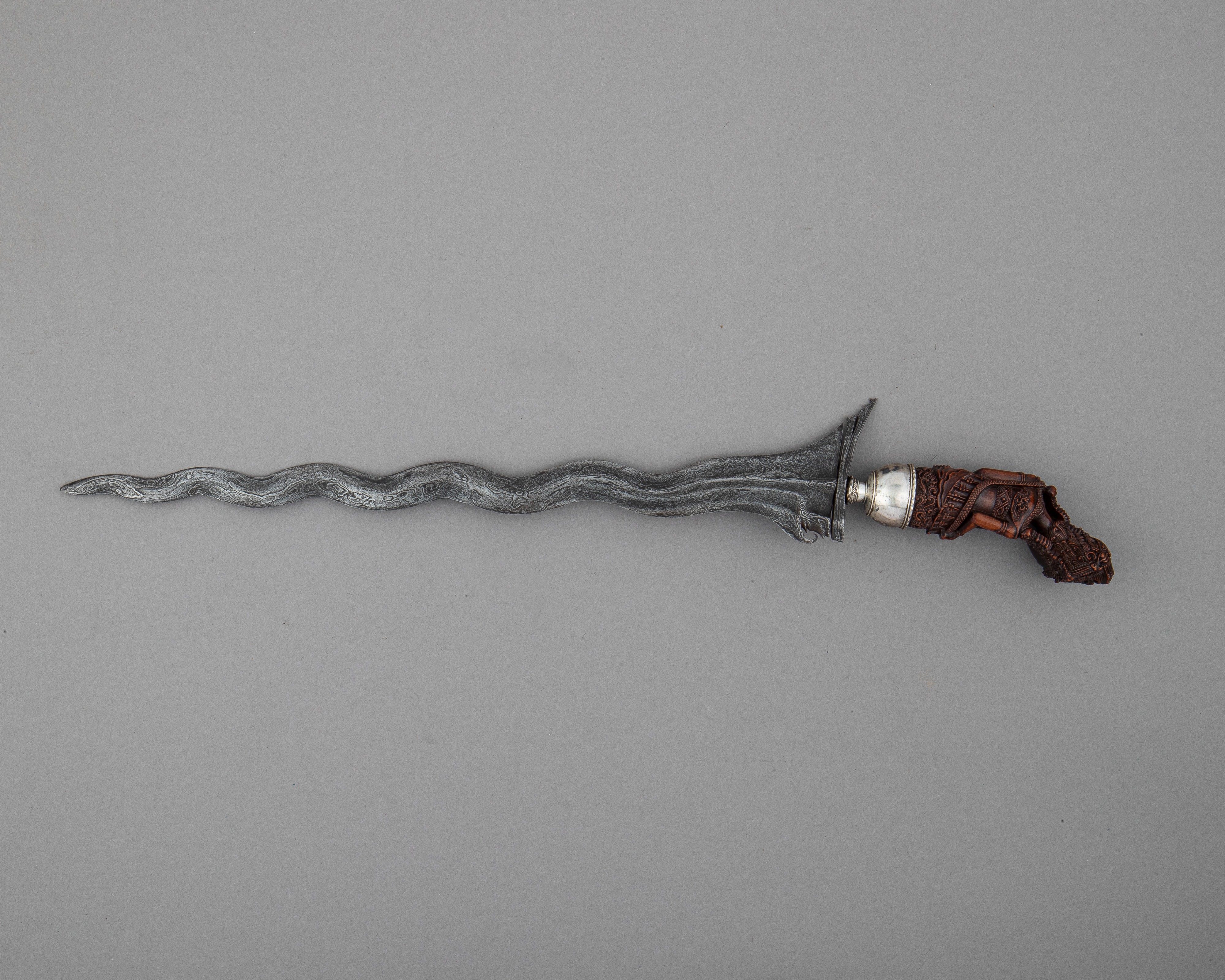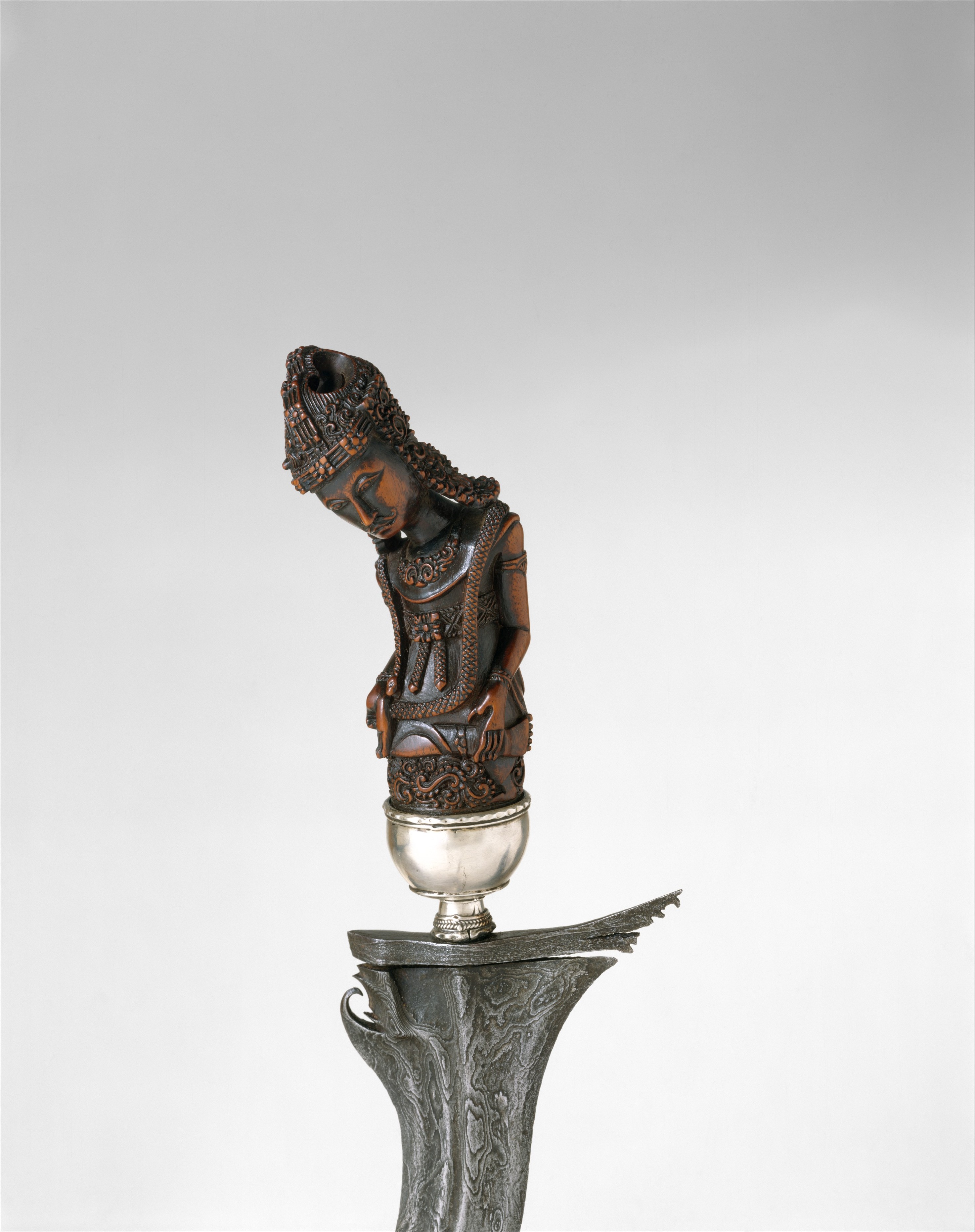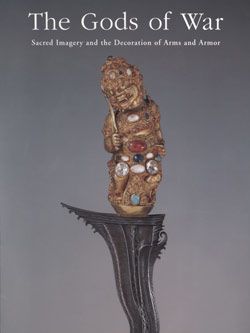Kris
Not on view
The kris, with its sinuous, snakelike blade, is the most characteristic weapon of Indonesia. Considered from early times to be imbued with great spiritual power, it is still an integral part of Indonesian culture. Figural kris hilts are associated in particular with Bali, where the traditions of Hindu art continued uninterrupted despite the influence of Islam, and with nearby eastern Java. Although the identity of some hilt figures is uncertain, many appear to be inspired by characters and episodes from the Māhābharata and the Rāmāyana. The profound impact of these great literary epics on Indonesian life, from as early as the tenth century until the present day, cannot be overestimated. The finely carved wood hilt of this kris has been thought to represent Krishna, an immensely popular Hindu god and a key figure in the Māhābharata. It seems more likely, however, that it depicts Krishna's companion Arjuna, prince of the Pāndava family and the most renowned epic character in Indonesia.
The plot of the Māhābharata revolves around the dynastic struggles of two princely families, the Pāndavas and their cousins the Kauravas, and the gods who assist them. In the Indonesian retelling of the Māhābharata and in the cycle of tales derived from it, the role of Arjuna, as leader of the Pāndavas, is vastly expanded. He is transformed from a foil for the gods into the predominant hero of the story cycle. In Indonesian culture he came to be regarded as the paradigmatic hero, representing the perfect combination of masculine beauty, virtuous behavior, and matchless strength in battle.
The details of this kris hilt are a compendium of iconographic details that identify and illustrate Arjuna's alus nature, the ideal qualities expected of a great hero. His noble status is signified by his headdress, which includes an upturned haristyle (gelung), known as gelung supit urang (shrimp style), and elegant ceremonial ear coverings (sumping). The inclination of his head and serene facial expression are intended to convey humility and composure. The narrow and elongated shape of the eyes indicates noble birth and great personal refinement. Draped over Arjuna's left shoulder and wrapped around his body is the sacred thread (upavīta), a symbol of religious initiation, which here, in the form of a snake, implies Arjuna's divine lineage. With his right hand he makes a symbolic gesture, possibly the varamudrā (boon-granting gesture), while the position of his legs suggests the half-lotus posture, or vīrāsana, which means, appropriately, the "attitude of the hero."
There are several episodes in Arjuna's career in which he engaged in the meditative and ascetic practices suggested by the figure on this hilt. The resigned melancholy and deeply reflective demeanor that suffuse this piece, however, may be intended to convey Arjuna's contemplation of the great truths revealed to him by Krishna as recounted in the Bhagavad Gītā, the best-known section of the Māhābharata. Here it is told that, on the eve of the decisive battle with the Kauravas, Arjuna expresses his wish to die rather than shed the blood of his own family in the pursuit of temporal power. In the dialogue that ensues between the deity and the hero, Krishna instructs Arjuna in the proper ways in which he must fulfill his duty in life (dharma) and thereby achieve union with god. Placing his faith in Krishna's teachings, Arjuna is able to overcome his misgivings and lead the Pāndavas to victory.
This image cannot be enlarged, viewed at full screen, or downloaded.
This artwork is meant to be viewed from right to left. Scroll left to view more.






